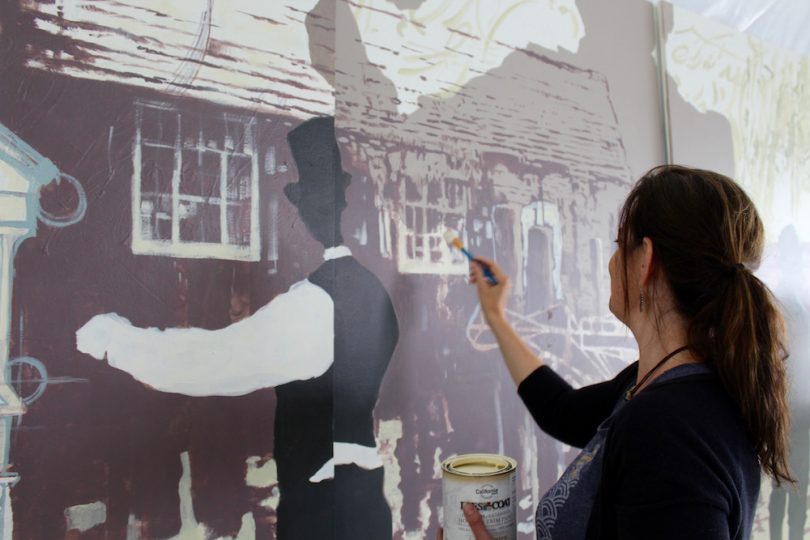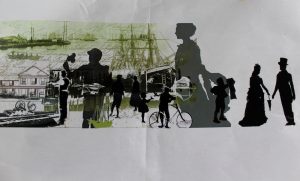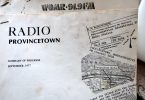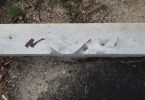HYANNIS – When is a mural not just a mural? When it revitalizes a neighborhood.
That is the goal of architect, educator and artist Mary-Ann Agresti of Yarmouthport, who along with artist Jackie Reeves of Sandwich, is painting a mural to be installed this week on the wall of Bradford’s Hardware on the corner of Pleasant Street and Main Street in Hyannis.
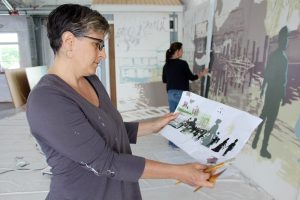
Architect and artist Mary-Ann Agrestic shows her drawing of the Sea Captain’s Row mural to be installed on Pleasant Street in Hyannis, as artist Jackie Reeves paints in the background.
The mural, nine panels stretching 24 feet long and 12 feet high with colors of blues, greens, yellow and sepia tones, has images hearkening back to the 1850s, depicting Hyannis’s illustrious past as a bustling seaport. Agresti used historic photos from the Hyannis Public Library to find images of Hyannis and people from the era to use in the mural.
“It is a reminder that this neighborhood has a unique history we can draw on. There is already a really authentic place there and we wanted it to be recognized,” Agresti said.
But the mural does not only reflect the past, Agresti said. She wants it to project the future.
“We want it to be both nostalgic but not just, ‘wasn’t it nice back then.’ We wanted it to be something to build on. It’s cultural currency,” she said.
Overlaying the seaport images are old-fashioned handwriting similar to old letters that sea captain’s wives might have written to their husbands, or ship’s logs by Hyannis sea captains who sailed the seven seas. Some figures are oversized shadows, other elements hover over parts of the mural. One section will stick out with figures in three-dimensions.
The mural will welcome visitors to “Sea Captain’s Row,” which is what Pleasant Street was in the past and what proponents hope it will be again in the future.

